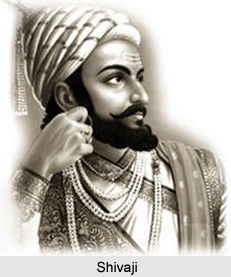 Battle in Poona was fought out between Shivaji and Shaista Khan, the representative of the Mughal ruler Aurangzeb. When Aurangzeb ascended the throne, Shivaji sent his envoy to offer homage and felicitation and at the same time to enquire yet again from the Emperor about the fate of the jagirs which Aurangzeb kept promising to return to Shivaji. The Emperor, no less shrewd than Shivaji, replied to the envoy that these were small matters, which he himself could not personally attend to, and, therefore, he had just appointed his maternal uncle Shaista Khan as the Subha of the Deccan. Shivaji was asked to refer to Shaista Khan the matters he had raised with the Emperor.
Battle in Poona was fought out between Shivaji and Shaista Khan, the representative of the Mughal ruler Aurangzeb. When Aurangzeb ascended the throne, Shivaji sent his envoy to offer homage and felicitation and at the same time to enquire yet again from the Emperor about the fate of the jagirs which Aurangzeb kept promising to return to Shivaji. The Emperor, no less shrewd than Shivaji, replied to the envoy that these were small matters, which he himself could not personally attend to, and, therefore, he had just appointed his maternal uncle Shaista Khan as the Subha of the Deccan. Shivaji was asked to refer to Shaista Khan the matters he had raised with the Emperor.
The real reason behind Shaista Khan`s presence in the Deccan was apparent to Shivaji. He realised that while he himself was involved in a long drawn out war with Bijapur, Shaista Khan was waiting on the sidelines ready to strike against him at a suitable moment. About the end of January 1660, the forces, which Shaista Khan had assembled, moved from Aurangabad nearer to the areas, which Shivaji controlled. The Khan`s army was a hundred thousand strong. He also had a complement of 700 elephants, 4,000 camels, 5,000 artillery wagons; some drawn by bullocks, others by horses, and his military treasury was reported to be over Rupees thirty crores. Khan seemed to be moving bag and baggage towards Ahmednagar. This aggressive move concentrated his forces around Poona, which he later succeeded in capturing. Although he held Poona for almost a year, he had little further success. He had set up his residence at Lal Mahal, Shivaji`s palace, in the city of Poona or Pune. Khan was steadily gaining ground. There were skirmishes over various strategic areas and several forts were captured by him and held for quite some time.
The clash with Shaista Khan came when Shivaji received a most offensive letter from the Mughal, in which Shivaji had been addressed in an insulting manner. He looked for different ways to avenge himself and finally found it in a Maratha officer in the Mughal army who was willing to help him. At Shivaji`s instance, the officer convinced Shaista Khan that there was to be a marriage in the family. He asked permission to lead the marriage procession into the Mughal camp situated in Poona. The Khan gave his permission. Thereupon, the Maratha with flaming torches and blaring trumpets, all of which distracted the vigilance of the Mughal troops in the camp, quickly arranged a mock wedding procession. Into this wedding procession, Shivaji smuggled some two dozen trusted soldiers appropriately dressed in ceremonial wedding clothes. According to Babasaheb Purandare, since Mughal army also consisted of Maratha soldiers, it was difficult for someone to distinguish between Shivaji`s Maratha soldiers and the Maratha soldiers of the Mughal army. Among those so disguised was Shivaji himself who thus arrived in Shaista Khan`s palace at a late hour of the night when everyone was asleep, including the women of the Khan`s harems.
After overpowering and slaying of the palace guards, the Marathas broke into the mansion by breaching an outer wall. Chimnaji and Netaji Palkar entered first along with Babaji Deshpande, another Shivaji`s long time loyal associates; they approached Shaista Khan`s quarters. It was the women who first awoke in terror realising that there was an attack on the palace. Shaista Khan was also awakened from his slumber. The Khan on hearing the news of an attack on the palace, made straight for the window in a bid to escape and, according to one of the chroniclers, Shivaji, still wearing ceremonial wedding clothes struck at him with his sword. The weapon did not strike Shaista Khan`s body, it is said, and it merely succeeded in lopping off one of the fingers of Khan`s hand.
The surrounding forces of Shivaji, who were secretly let into the camp by the supposed `wedding procession`, closed in to conquer. This brought great shame and disgrace to Shiasta Khan, who narrowly escaped death and lost his son and many of his guards and soldiers in the raid. He hurriedly left Poona and soon thereafter, his forces evacuated the city. Shaista Khan narrowly escaped death. An angered Aurangzeb transferred him to distant Bengal as a punishment for bringing embarrassment to the Mughals with his ignoble defeat in Poona.



















